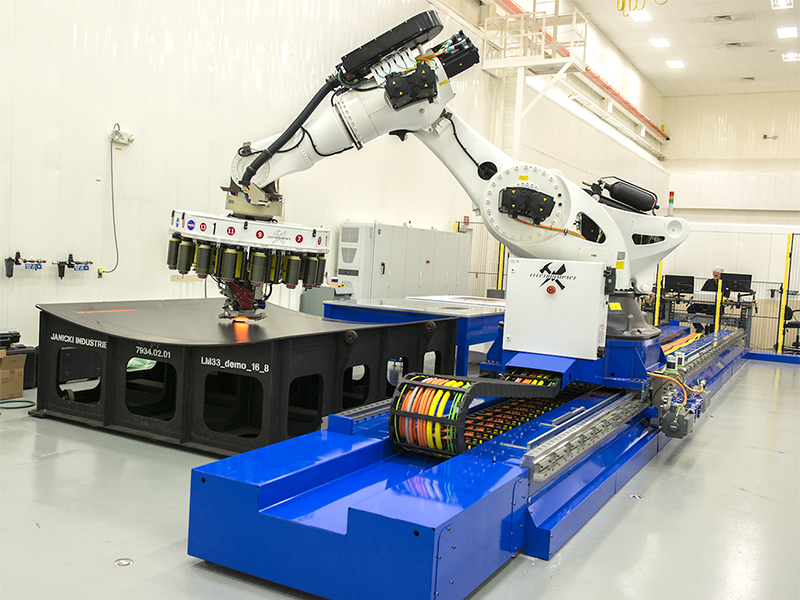NASA's Calibration System for Automated Fiber Placement Webinar
NASA's Langley Research Center Innovators have developed a Calibration System for Automated Fiber Placement (AFP) machines. AFP is a modern composites-manufacturing method offering speed, repeatability, and waste-minimization benefits over traditional layup techniques. Used to make aerospace parts and wind-turbine blades, AFP employs a robotic arm to apply strips of carbon fiber prepreg (aka composite tape or tows) to build up a composite part layer by layer. While advantageous, any imperfectly placed (or slipped) tows generate lap-and-gap defects relative to adjacent tows, which can degrade structural integrity by as much as 30%. Currently, manual visual inspection is used to identify and fix such defects before curing, which is highly labor-intensive. In-situ inspection systems are emerging, but no method exists to create accurate "defect standards" to facilitate active system calibration. NASA's new calibration system will enable the next generation of AFP in situ inspection technologies.
During the webinar, you will learn much more about this novel technology and how NASA's technologies and capabilities are available to industry and other organizations through the NASA Technology Transfer Program.

Peter Juarez is a research engineer with the Nondestructive Evaluation Sciences branch at NASA Langley Research Center. Peter specializes in multiple fields of NDE including ultrasound, thermography, guided wave, and advanced automated data processing. The technology that inspired this patent, the in situ thermal inspection system for AFP, has been in development at Langley for the last 4 years and has been utilized in several prototype and production projects.



